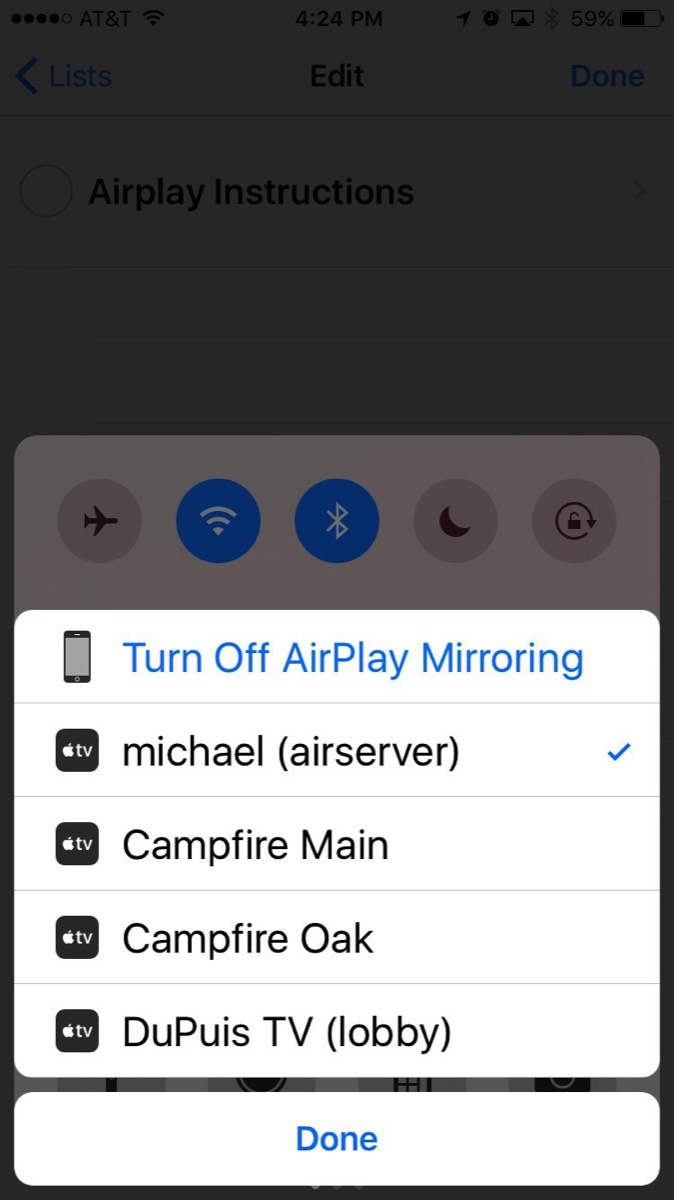
Have you tried turning it off and on again?


Using Airplay
A guide to mirroring a device's display to a television or Macintosh
- Click on the AirPlay icon
 in the menubar and select the AirPlay receiver (Mac or Apple TV) that you want to use to mirror your display.
in the menubar and select the AirPlay receiver (Mac or Apple TV) that you want to use to mirror your display.
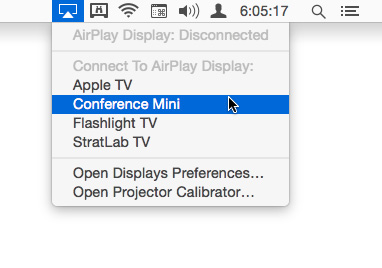
Once connected, your computer's display will be mirrored to the AirPlay receiver. Depending on how much video RAM is available on your computer, you may also be able to use the AirPlay device as a second monitor (i.e. not mirrored) by selecting "Extended Desktop" from the AirPlay menu.
To disconnect from AirPlay, go again to the AirPlay menu and select "Turn AirPlay Off."
Certain programs, notably QuickTime and iTunes, and sites like YouTube in the Safari browser, feature an AirPlay button as part of their media controls. Selecting an AirPlay receiver using this method instead of through the menubar icon will display the media content only rather than the entire screen.

TIP: If you find that video streamed this way is choppy, try connecting to AirPlay via the menubar icon instead (as described above), and then run the app in fullscreen mode.
In order for a Macintosh to act as an AirPlay receiver, the application AirServer must be running. AirServer is a traditional Mac app located in the Applications folder, and it loads at startup, so you shouldn't have to launch it unless you explicitly quit the app. Once launched, AirServer adds its icon to the menubar, where you can access the preferences.
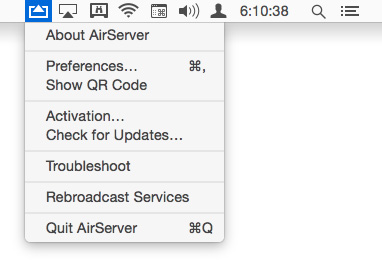
- TIP: If the Macintosh you want to use with AirPlay does not appear in the list of available AirPlay receivers, select "Rebroadcast Services" from the AirServer menu to refresh the list.
If you don’t see an AirPlay icon in your menubar, go to System Preferences, then Displays, and check the box labeled “Show mirroring options in the menu bar when available.”
If the box is checked but you still don’t see the AirPlay icon, your computer is too old to mirror via AirPlay (contact DuPuis Support for an upgrade).
If you don't see the device you want to use in the list of available AirPlay receivers, check to make sure that both your computer and the AirPlay receiver are running on the same WiFi network.
As noted above, if your intended AirPlay receiver is a Macintosh running AirServer, try selecting "Rebroadcast Services" from the AirServer menu.
- Swipe up from the bottom of your iOS device's screen to reveal the Control Center. Tap the "AirPlay Mirroring" button.
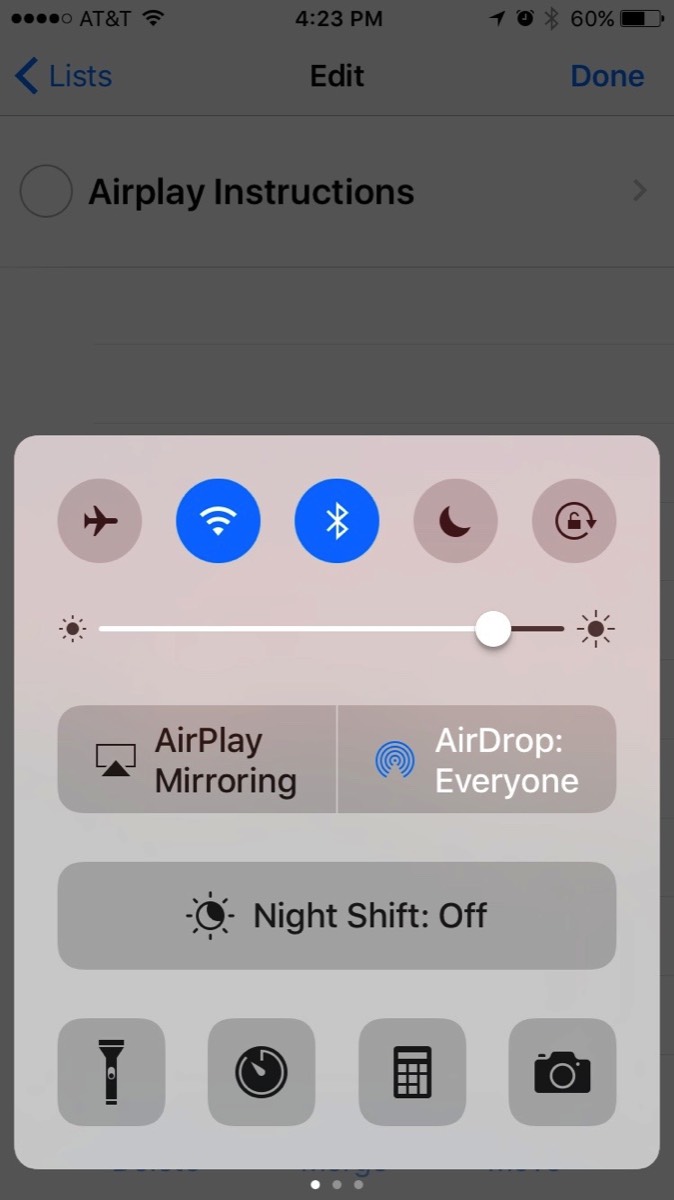
- Select the AirPlay receiver from the pop-up list. If you don't see your intended receiver on the list, refer to the troubleshooting section above for possible remedies.
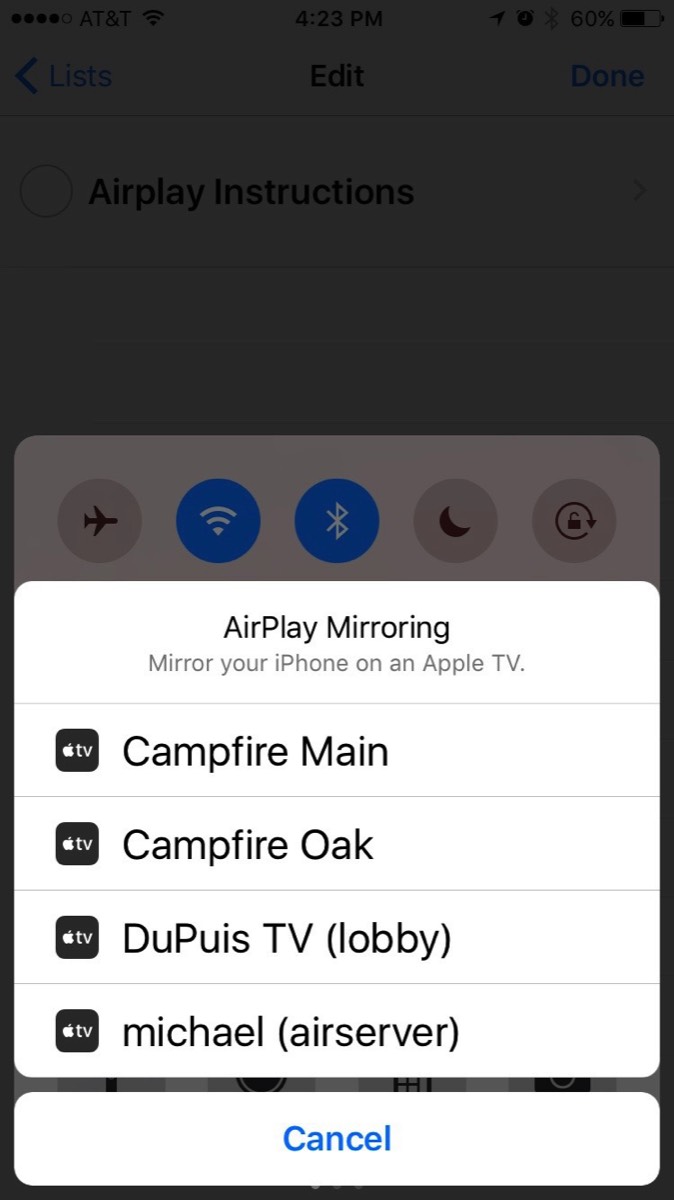
Once connected, your iOS device's display will be mirrored to the AirPlay receiver. Rotating your device changes the orientation of the screen mirrored to the AirPlay receiver.
Some apps, such as Apple's Keynote app for iOS, do not precisely mirror their content to the AirPlay receiver. In the case of Keynote, for example, the iOS device will show additional tools and controls, while the AirPlay receiver will display only the Keynote presentation.
Some apps, such as Apple's Videos app or Google's YouTube app, feature an AirPlay button as part of their media controls, as described above. Selecting an AirPlay receiver using this method instead of through the Control Center will display the media content only rather than mirroring the iOS device's entire screen.
Audio-only apps such as iTunes can also be used with AirPlay, though the audio AirPlay icon appears slightly different than the video version.
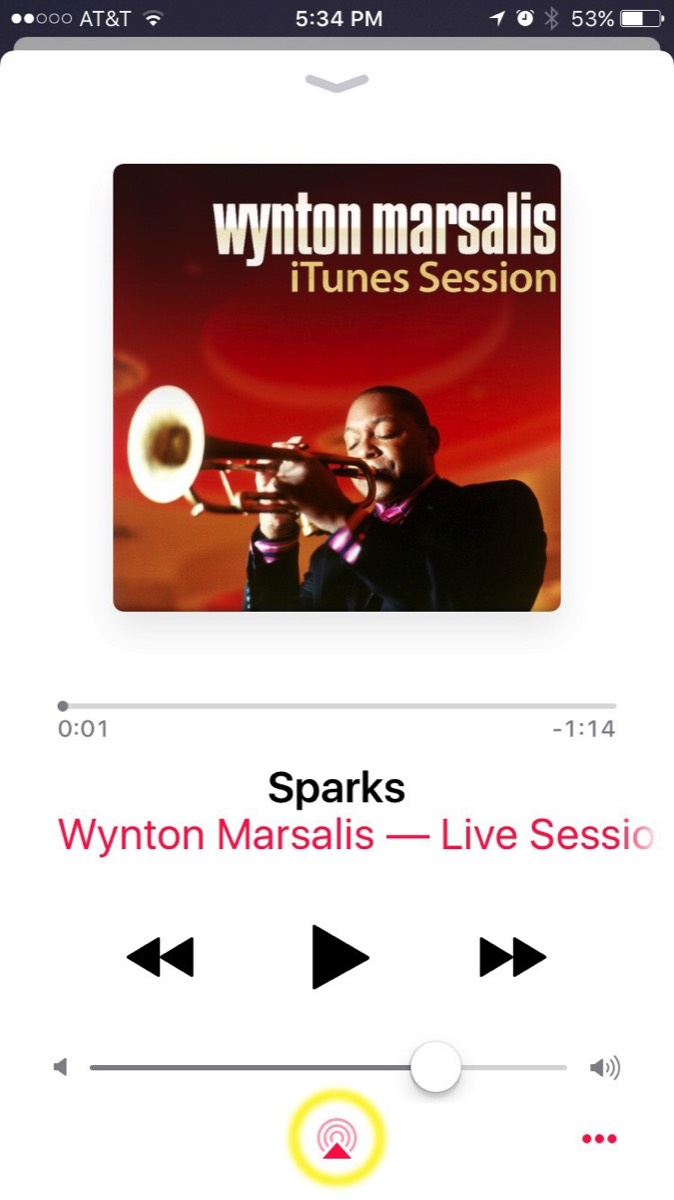
- To detach from AirPlay, swipe up again from the bottom edge of your iOS device to reveal the Control Center, then tap "Turn Off AirPlay Mirroring."
